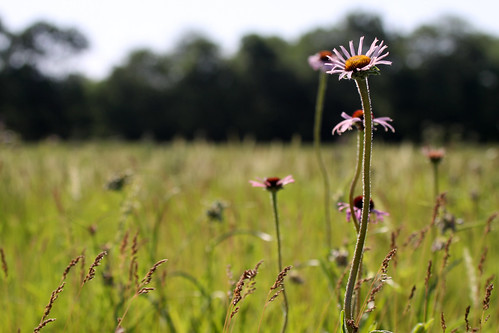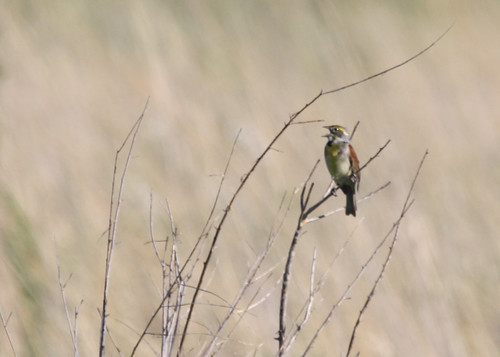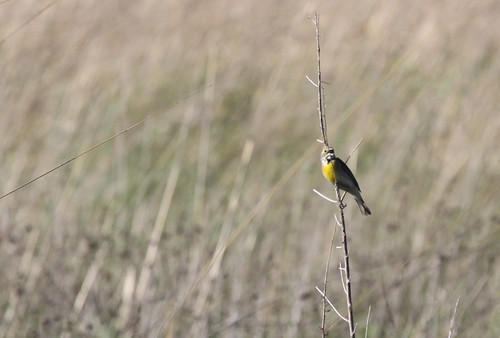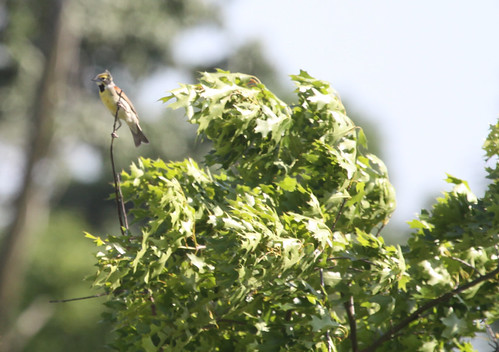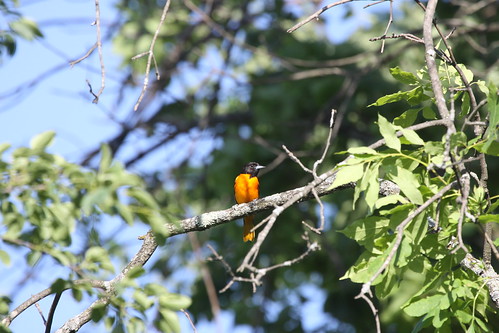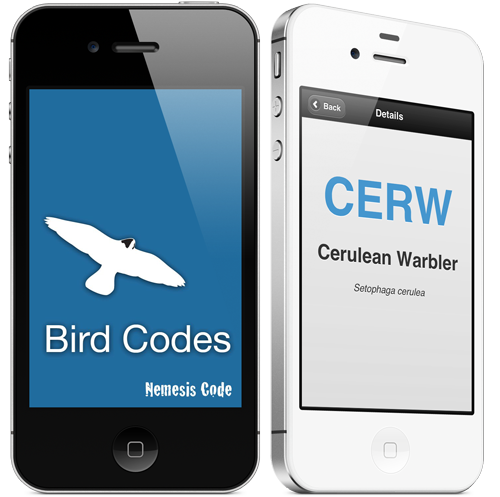Earlier this month, my husband and I had occasion to drive nearly 500 miles up the province to northwestern Alberta where we grew up. We have family and friends scattered throughout this area, and familial duties kept us very busy. Birders, however, always manage to sneak in some viewing even during a weekend of planned events.
We traveled through a variety of ecosystems, and once we left the prairie grasslands where we now live, two words became prominent - trees and water.
A large portion of the trip took us through a thick band of boreal forest, where birding is more than a challenge. I could hear a pileated woodpecker calling in there, but wasn’t about to go in looking for him.
Driving along the highway is not really conducive to bird watching, but if you know where to make a quick stop you can fit it in. There are numerous little fens along the road, and our first stop produced a photogenic group of Ring-necked ducks tucked away in the forest.
After driving through this long stretch of closely packed trees, the landscape relaxes into parkland, and some of Canada’s most productive farming country. Dotted in and around the farms are a large number of lakes, and 505 square miles (1308 sq. km) have been identified as an Important Bird Area for Trumpeter Swans and other waterfowl. The largest lake in the area is 6.5 miles (10 kilometers) long.
This area is the main Trumpeter Swan breeding ground in Canada. Every year when they came back we had to share our local parks with swans, and it became habit to just take a few side steps to go around these big birds and continue walking. This is why I've been known to say "oh it's just a swan" when other birders are doing back flips at seeing one of these graceful birds.
Whenever we make a trip north, I make it a point to stop at this well known swan breeding lake. On this visit though, the wind was whipping up whitecaps and there was not a swan in sight. We had to settle for huge numbers of Lesser Yellowlegs and Semi-palmated Sandpipers hugging the shoreline.
And of course the ubiquitous...
One of the most productive swan breeding lakes does not allow public access to the shore for the birds’ protection, but we could see several hundred of them, all out of camera range. Knowing my way around the area however, meant that I knew of several smaller lakes and we finally managed to find pair close enough for my camera. This particular lake also produced a raft of Ruddy Ducks in their magnificent breeding plumage, as well as Red-necked Grebes and a huge variety of other duck and gull species.
This lake was also home to the old man of the cattails...:)
Along with the larger water bodies, the area is dotted with smaller, bug-infested muskeg and bogs that are extremely popular with birds and amphibians. As well as Northern Shovelers, Gadwalls and American Wigeons, this particular patch contained Spotted Sandpipers, Rusty Blackbirds and a cloud of Yellow Warblers.
Our trip took us across many rivers both large and small. The trees on the banks were decked out in their new spring finery, showing off uncountable shades of green. A quick stop to stretch our legs brought a curious Swainson’s Thrush out of the undergrowth, and I wasn’t quick enough to get a photo of the Yellow-bellied Sapsucker in the trees above.
We made one last quick birding drive on the morning we headed home, still looking for those amazingly elusive swans. As so often happens on birdwatching drives though, we got a wonderful surprise on a farm near one of the lakes. You probably heard me when I yelled stop.











